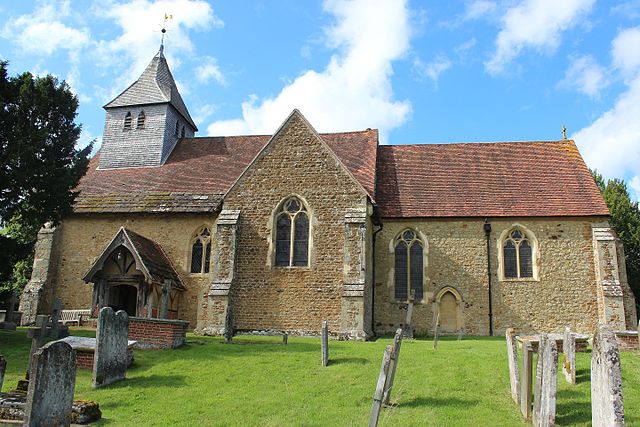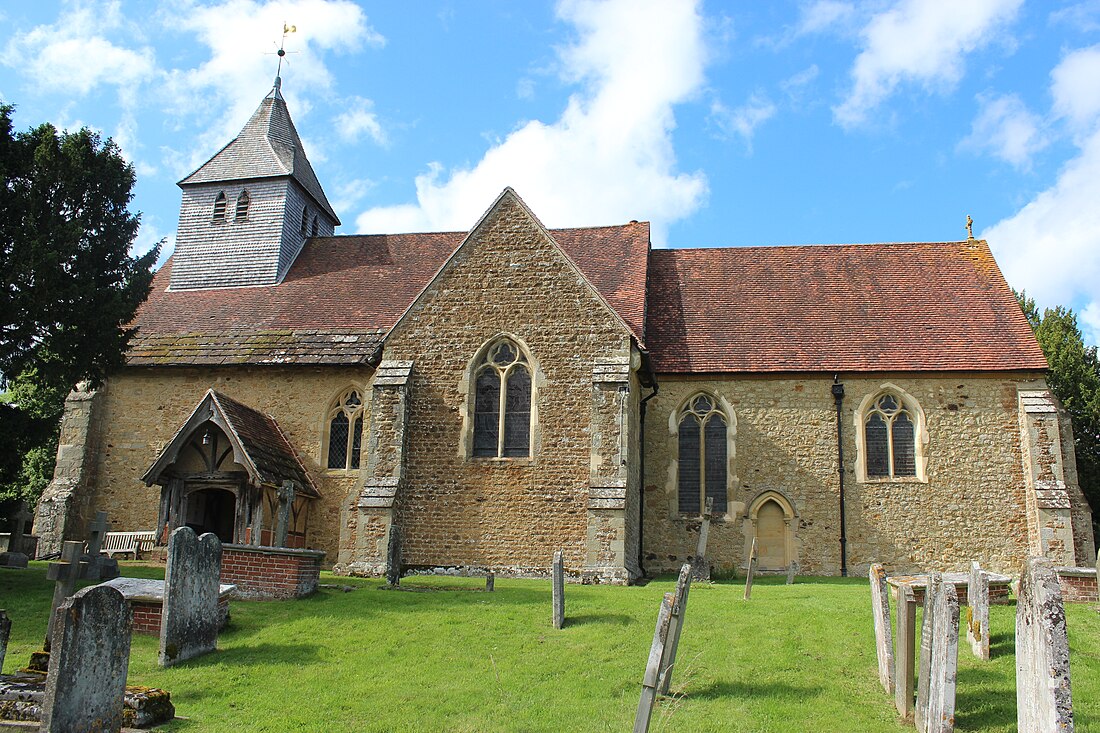Top Qs
Timeline
Chat
Perspective
Bargate stone
Highly durable form of sandstone used for building From Wikipedia, the free encyclopedia
Remove ads
Bargate stone is a highly durable form of sandstone. It owes its yellow, butter or honey colouring to a high iron content.[1] In some contexts it may be considered to be a form of ironstone[citation needed]. However, in the context of stone buildings local to the extraction of Bargate Stone, the term 'ironstone' is often used to refer to a darker stone, also extracted from the Greensand, which rusts to a brown colour.[2]

Remove ads
Sources
This stone was quarried for centuries in the Bargate Member of the Greensand Ridge, particularly where it is widest in south west Surrey, England. It occurs near the surface and was quarried in the hillsides near Godalming. Medieval quarries are still visible in Godalming, at the foot of Holloway Hill.[1]
Bargate stone is rare in current use due to its short supply.[2] Bath stone, Yorkstone and other similar coloured stone is sometimes used as alternatives, or to complement it[citation needed].
Remove ads
Petrography
Bargate stone is typically a mix of sandy bioclastic limestone and bioclastic sandstone. The intergranular cements comprise ferroan carbonate.[3]
Use
Summarize
Perspective
Bargate Stone is found in many buildings in Surrey, approximately 250 of which are listed, and in two churches in London.[4] It is endemic to older buildings near the Greensand Ridge where it is found. Its 20th-century use tended towards coursed use of Bargate sandstone with bricks, or concrete, sometimes with ashlar dressings or mortar rendering.[5]
Examples
Early medieval

- The Keep at Guildford Castle.[6] It was a credit to the strength of Bargate that it was chosen for the main structure, standing on top of the natural chalk and Bargate stone bedrock, made it available by quarrying in the locality.
- Godalming Parish Church, Grade I listed assisted by Saxon features.
- Church of St. Mary and All Saints, Dunsfold
- St Nicholas's Church Compton, Guildford (Bargate rubble used, mortar-rendered)[7]
- Church of St. Mary the Virgin (12th-century tower only), Oxted in Tandridge District, east Surrey[8]
- St Mary's Church, (relevantly mostly in clunch from its own Quarry Street) Guildford[9]
- St James's Church, Abinger[10][n 1]
- All Saints Church, Witley, Surrey[11]
16th Century
Tillingbourne Cottage, Wotton, Surrey[12]
17th Century
18th Century

19th Century
- St Catherine's School/Drama Studio, Guildford[15]
- St Stephen's Church, Gloucester Road, London (York stone parpoints and dressings in Bath stone)[n 2][16]
- St Nicholas's Church, Guildford[17]
- St Michael's Church, York Town, Camberley[18]
- The Shah Jahan Mosque, completed in 1889 along with similar-coloured Bath stone, but a limestone not a sandstone
- Charterhouse School (completed 1872)[19][n 3]
- St Stephen's Church, Rochester Row, Westminster[20][n 4][21]
- Booker's Tower[22]
- Munstead Wood[n 5][23]
- Chinthurst Hill[n 6][24]
- Grafham Grange School, Bramley[n 7][25]
- St James' Court, Farnham[n 8][26]
- St Johns Church, Caterham[n 9][27]
20th Century
- The Pergola, Vann Park and Garden, Hambledon[28]
- Pinewoods, Oxshott[5]
- Tigbourne Court, Wormley (blocks with thin horizontal bands of tiles)
- Hascombe Court, Hascombe[29][n 10]
- Platform of war memorial, Bramshott, Hampshire[n 11][30]
- St Tarcisius Church, Camberley — the War Memorial Church to the British Catholic army officers who died in World War I. North Lady Chapel has triple arches and a stone reredos depicting the Virgin and Child and angels[31] Bath stone dressings[n 12]
- Orchards by Edwin Lutyens and Gertrude Jekyll, Bramley[32]
Remove ads
See also
- Reigate Stone quarried from the Upper Greensand Formation in east Surrey
Notes and references
Wikiwand - on
Seamless Wikipedia browsing. On steroids.
Remove ads
